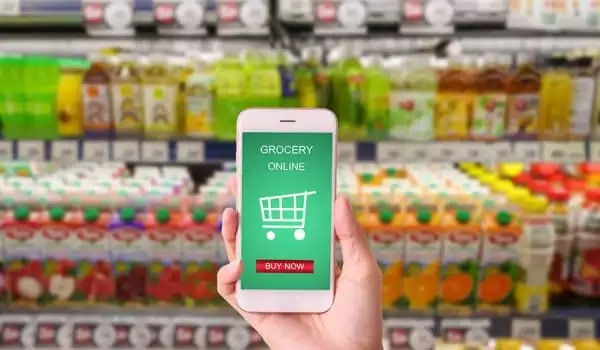According to a new study conducted by researchers from the NYU School of Global Public Health and Tufts University’s Friedman School of Nutrition Science and Policy, online food retailers do not consistently display nutrition information on their websites, and U.S. laws lag behind in mandating the same labeling required for foods sold in brick-and-mortar stores.
“Information required to be provided to consumers in conventional grocery stores is not being provided uniformly online — in fact, it only appears on roughly a third of the online grocery items we surveyed,” said Jennifer Pomeranz, assistant professor of public health policy and management at the NYU School of Global Public Health and lead author of the study, which was published in Public Health Nutrition.
“Our study shows that the online food shopping environment today is a bit of a ‘Wild West,’ with consumers receiving incomplete and inconsistent nutrition information,” said Dariush Mozaffarian, dean of the Friedman School and the study’s senior author. “Online shopping will only grow in popularity, providing an excellent opportunity to positively influence consumers to make healthy and safe decisions. We must seize this opportunity to contribute to the country’s progress in combating the nutrition-related health crisis.”
Our findings highlight the current failure of both regulations and industry practice to provide a consistent environment in which online consumers can access information that is required in conventional stores
Professor Sean Cash
Online grocery shopping was already popular before COVID-19, but the pandemic has increased its popularity significantly. Online grocery sales in the United States tripled from 3.4 percent to 10.2 percent of total grocery sales between 2019 and 2020, and are expected to reach 21.5 percent of total sales by 2025. Furthermore, in 2019, the United States Department of Agriculture (USDA) launched a pilot program to allow Supplemental Nutrition Assistance Program (SNAP) participants to buy groceries online.
However, the rapid expansion of online grocery shopping has outpaced regulatory attention to information on foods sold online. While nutrition facts, allergen information, and ingredient lists are required to appear on the physical packaging of food products in the United States, these regulations do not currently apply to online retailers. As a result, online grocery shoppers may not have access to critical health and safety information.
To gain a better understanding of the landscape of what information appears with online groceries, the researchers examined ten major products from nine major online grocery retailers to determine what information is displayed. They concentrated on bread, cereals, and drinks, which are packaged foods required by the Food and Drug Administration (FDA) to include a standardized information panel that includes nutrition facts, a list of ingredients, common food allergens, and, for fruit drinks, the percentage juice. The researchers also looked into the federal government’s legal authority and limitations for requiring online food retailers to disclose nutrition information.

They discovered that this information was only included and legible 36.5 percent of the time across all products and retailers. Potential allergens were only disclosed on 11.4 percent of products, and nutrition facts and ingredient lists were only available about half of the time (45.7 percent and 54.2 percent , respectively). In contrast, marketing health and nutrition-related claims such as “low sodium” were more common on online product images, appearing on 63.5 percent of products.
“Our findings highlight the current failure of both regulations and industry practice to provide a consistent environment in which online consumers can access information that is required in conventional stores,” study author Sean Cash, Bergstrom Foundation Professor in Global Nutrition at the Friedman School, said. “With the expectation that online grocery sales will exceed $100 billion by 2021, the requirements for providing consumers with information must evolve to keep up with the changing marketplace.”
Following that, the researchers examined the federal government’s legal authority and limitations for requiring online food retailers to disclose nutrition information. They identified three federal agencies with existing regulatory authority over food labeling (the FDA), online sales and advertising (the FTC), and SNAP retailers (the USDA). The researchers conclude that the existing authorities of these agencies can be used to address labeling gaps in the online food retail environment.
“The federal government can and should act to require that required nutrition and allergen information be disclosed by online food retailers to support consumer health and informed decision-making,” Pomeranz concluded.
According to the researchers, failing to consistently disclose this information on food products may pose safety concerns for consumers who rely on it, such as in the case of allergens, sodium, or sugar.
“Labeling requirements are intended to protect consumers who, for the most part, cannot protect themselves. This is especially true for online sales, where customers cannot physically inspect the products “Pomeranz stated. “At a bare minimum, the entire required nutritional information panel should be made visible and legible for online grocery shoppers.”
















